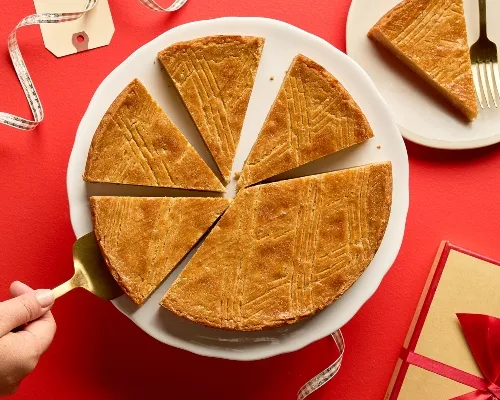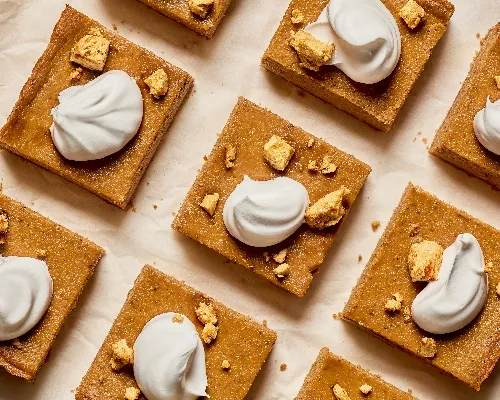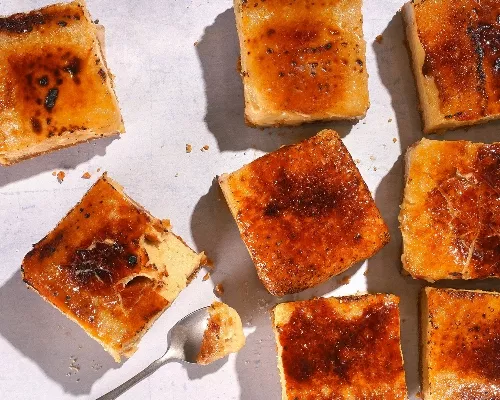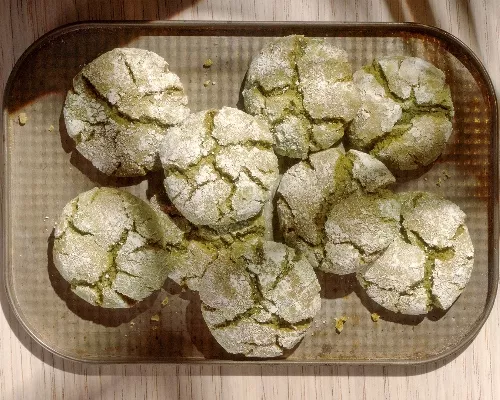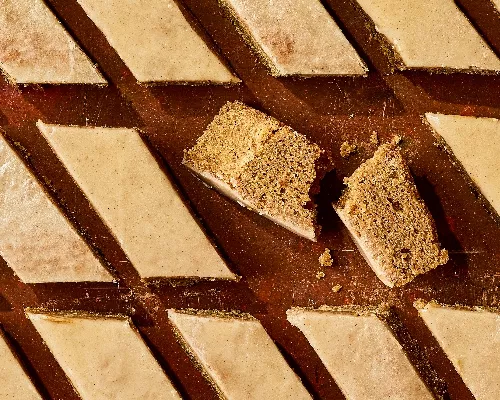Step 1
Preheat the oven to 350°F (176°C). Line two baking sheets with parchment paper. Set aside.
Step 1
Whisk together flour, salt, and baking soda in a medium bowl until evenly combined and no lumps remain.
Step 2
In a large bowl, whisk together melted butter and oil. Add and whisk in the Redpath® Dark Brown Sugar and the Redpath® Granulated Sugar until well mixed.
Step 3
Whisk in the egg, yolk, and vanilla extract until combined. With a large rubber spatula, stir in the peanut butter until mixture is homogenous.
Step 4
Add half of the dry ingredients to the peanut butter mixture. Quickly stir until almost combined. Add in the remaining dry ingredients. Stir and fold until no flour streaks remain.
Step 5
Divide the mixture in half (see Chef’s Tips). Place half of the dough in the bowl that held the flour (no need to wash). Cover and place into fridge to chill.
Step 1
In a small bowl, stir together the cocoa powder and instant espresso until evenly distributed.
Step 2
Stir in the hot water to bloom the cocoa powder until a thick paste forms.
Step 3
Add the paste to the other half of the dough. Quickly work the chocolate mixture dough into the base dough until thoroughly combined, being careful not to overmix the dough. Cover and place into the fridge to allow the chocolate dough to rest; 20 minutes.
Step 1
With a trigger-style ice cream scoop (see Chef’s Tips), scoop golf-sized balls of the base (peanut butter) cookie dough onto one of the prepared baking sheets. Roll into even-sized balls. With hands or a knife, divide each dough ball in half.
Step 2
Remove chilled chocolate cookie dough from fridge. With the same scoop (no need to wash), scoop golf-sized balls of the chocolate cookie dough onto the other prepared baking sheet. Roll into even-sized balls. With hands or a knife, divide the chocolate cookie dough balls in half.
Step 3
Press together a peanut butter half and a chocolate half. Split the ball in two, stack the halves to create alternating layers, then roll into a marbled ball. Repeat with the remaining dough. Space each finished dough ball about 2 inches apart on the prepared baking sheets.
Step 4
With the bottom of a flat-bottomed drinking glass, gently press the tops of each ball to about an inch to ½ inch thick. Place cookies into the preheated oven and bake for 10 to 12 minutes or until the edges are golden.
Step 5
Remove from the oven and sprinkle the tops with flaky sea salt, if desired (see Chef’s Tips).
Step 6
Let cool on the pan for 5 minutes before removing and placing onto a wire cooling rack to cool completely.
Step 1
On a flat worksurface, place half of the completely cooled cookies with their bottom sides facing up. Working quickly, scoop a generous amount of ice cream (¼ to ⅓ cup) onto a cookie, using an offset spatula or the rounded part of the ice cream scoop to press and evenly spread the ice cream to the edges. Press another cookie (bottom-side down) onto the ice cream. Lift assembled cookie up and evenly press the two cookies together to ensure they adhere to the ice cream.
Step 2
If desired, press or roll the edges of the ice cream sandwich into sprinkles, chocolate, or chopped nuts. Wrap in parchment paper, wax paper, or plastic wrap and place into the freezer; 2 hours (see Chef’s Tips). Repeat process with remaining cookies.

*To easily divide the cookie base dough, weigh the finished dough and divide it into two equal portions.
*If a trigger-style ice cream scoop is not available, scoop a heaping tablespoon of the dough, about the size of a golf ball; alternatively, scale out each dough round to about 40 grams for the peanut butter dough and about 45 grams for the chocolate dough.
*To make baked cookies that are misshapen into rounds, place a round cutter or drinking glass slightly larger than the cookie over the cookie and “swirl” the cookie into shape using a circular motion. This should be done quickly and immediately after the cookies come out of the oven for best results.
*If the ice cream used is particularly hard, place it in the fridge to soften 20 to 30 minutes before assembling the sandwiches. This will help prevent the cookies from breaking when pressing together.
*Ice cream sandwiches can be made, wrapped well, and frozen for up to 3 months.


